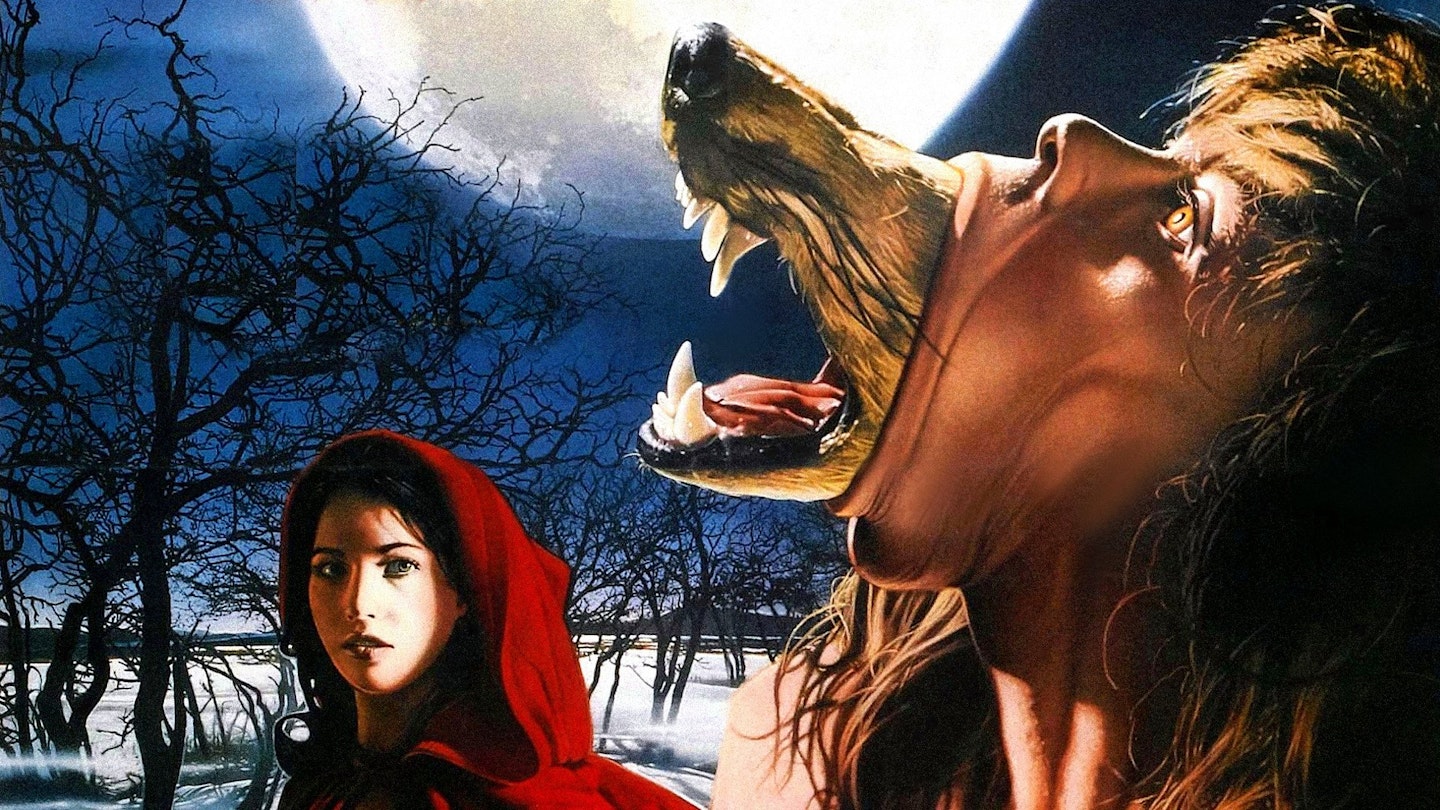The late feminist novelist Angela Carter had a peculiar if not downright potty take on literature. Her predilection was to take familiar, classical fairy tales and suffuse them with sexual references, building on the inherent suggestive metaphors until they are almost screaming for mercy. Little Red Riding Hood? Well, the hood can be taken for the female hymen and the wolf male lust... Nursery tales a la Sigmund Freud. Lavish, dark and abstract, they were exotic, subversive fantasies seemingly beyond the reach of conventional cinema. Irish director Neil Jordan, a novelist himself who began his film career as a creative assistant on John Boorman's Excalibur in 1981, first met Carter at a writer's conference and it was she who expressed an interest in bringing her short stories to the screen.
The short story called The Company Of Wolves (from the collection The Bloody Chamber), which forms the basis for the film, was a meagre 12 pages long so Carter and Jordan (they wrote the script together) built it up in layers, inserting imagery from classical fairytales into a deliberately dream-like and episodic format (there is virtually no running narrative), with only Angela Lansbury's genial grandmother bestowing cautionary fables on her enraptured granddaughter Rosaleen (Sarah Patterson) to string the various elements together. Shedding virtually all the features of a classical werewolf story, the film seems to exist entirely within Rosaleen's imagination. Its horror — such as it is — is conveyed through creeping revulsion and menace. The set-pieces that pepper the film are startlingly, even gleefully, nasty hinting at the brash excesses of Ken Russell but delivered with immeasurably more elegance. A long lost husband (played by Jordan faithful Stephen Rea) returns home and, on finding his bride remarried, proceeds to tear off his own face. As he does so, the snarling jaws of a wolf are revealed. Later, at a lavish wedding party, the debauched guests are transformed into ravening wolves by a gatecrashing (and heavily pregnant) witch. Finally, Rosaleen herself enters the fray of her own dreamscape, enacting Little Red Riding Hood with a handsome huntsman whose eyebrows happen to meet in the middle — the film did few favours for the self-respect of the more hirsute gentleman. All the while the story weaves in and out of the "real" world as Rosaleen's older sister Alice falls foul of a wolf (read: she has already succumbed to the male dominated sexual world) and the devil himself (Stamp) makes an appearance in a Rolls Royce.
It is a complex and at times infuriating structure — it often helps to conceive of the film as the book of short stories it stems from — but simultaneously vivid and disturbing. The production design is extraordinary, belying the film's shoestring budget. The late Anton Furst (who later worked on Tim Burton's Batman (1989) creates a storybook idyll laced with sinister delights, a world laden with primal symbolism: mist-shrouded forests stocked with phallic mushrooms, giant dollhouses, forbidden fruit ripe for the plucking. In turn the werewolf sequences boast highly original and appropriately hideous transformations by makeup specialist Christopher Tucker. Wolves literally climb out from inside ("The worst kind of men are hairy on the inside"), the huntsman's face splitting open to reveal the snout; at the changeling banquet a woman rips open her bodice to display hairy breasts; the lost husband tears off his skin and his skull transforms into a wolf's: all grim, bloody and blackly funny — although by current standards they are showing their age.
This is the most immediately metaphorical of all the horror films in this tome. In fact, it acts as one giant allusion in which reality is simply an afterthought. Jordan always saw it as a meditation on the ways society teaches young women to look at themselves sexually and to recognise the things to be afraid of. Company certainly centres on Rosaleen's sexual awakening, a kind of phantasmagoric representation of puberty where men, quite literally, are beasts.
